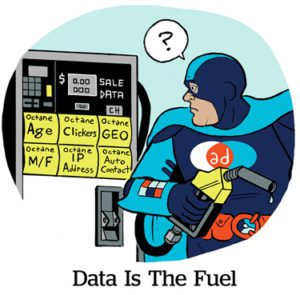Despite all the talk about digital-style ad targeting on CTV, most buys are still happening on broad demos.
More advanced targeting requires exponentially more data than demo-based targeting, including new identifiers and outcomes-based data, such as sales and conversions. Ensuring all that data is accurate – with consistency across linear and streaming – is a big challenge.
Nearly half of the data used for CTV ad targeting is flat-out wrong, according to a recent study conducted by data validation company Truthset, which evaluated the matches data brokers make between hashed emails and postal addresses.
The lack of clean and correct data is why broadcasters are shifting their conversations beyond the need for advanced audience segments to focus more on the quality of those segments, said Noah Levine, VP of advanced advertising at Warner Bros. Discovery, speaking at Advertising Week in New York City on Wednesday.
To get quality data, agencies and programmers need more of the TV industry’s favorite new buzzword: interoperability.
Say what?
One reason there is so much bad data is the amount of processing it goes through before it’s used in the serving of an impression.
Licensing new data, matching it with an existing audience and building models to find similar viewers is a multipronged process that introduces opportunity for error. It’s a bit like the children’s game “Telephone:” Information can look a lot different coming out of a system than it looked going in.
It’s one thing to identify a brand’s customers, said Michele Stone, VP of advanced advertising product and planning at Paramount, also speaking at AWNY. But making sure those identifiers are consistent from planning through activation and measurement is another story.
And it doesn’t help that linear and streaming ad buying teams still work in silos, including by using different data sets to find the right audiences based on how those audiences are sold.
For example, media companies are still trying to figure out how to connect audiences between linear addressable and data-driven linear (DDL), Levine said. Addressable is one-to-one household targeting, whereas DDL is one-to-many but with more specific cohorts, such as cat owners or pickup truck drivers.
For the most part, similar data sets are available to buyers and sellers for linear planning, Levine said, but “there’s definitely [still] a gap in the streaming data [both sides] are using for planning.”
It’s all about communication
The best way for programmers and agencies to make sure they’re using the same data that’s accurate is to compare notes.
Combining different first-party data sets can help improve the quality of identity graphs and the accuracy of targeting and measurement, Stone said.
But actually linking data together isn’t so simple. First-party data is a competitive edge, and media companies aren’t known for being generous when it comes to sharing it.
But the work the broadcaster-led joint industry committee (JIC) is now doing could change that dynamic, Levine said.
The JIC regularly makes trade headlines because it’s creating a process to certify alternative measurement currencies, which is a trendy topic in the industry right now.
But integral to that certification process is the JIC’s other project: creating a cohesive streaming data set between publishers and agencies. (Certified currencies will eventually get access to this streaming data product for measurement.)
In the meantime, media companies should try to work much more closely with marketers and agency partners to make sure everyone’s speaking the same language, Levine said.
Paramount, for example, recently tested a pilot integration with Omnicom Media Group and data activation platform Mediaocean to run linear campaigns on advanced audience data from VideoAmp instead of Nielsen demos.
Media companies, meanwhile, need to activate against the data that agencies are using to plan their TV buys, Stone said. (Many agencies use Mediaocean for campaign planning and activation.)
With more solidified pipes between buyers and sellers, said Brian Lin, head of product management at TelevisaUnivision, “marketers will be better able to measure and understand outcomes.”
And to that end, Lin said, ”the buy and sell sides are working [more closely] together to share data and achieve what marketers are looking for.”


















